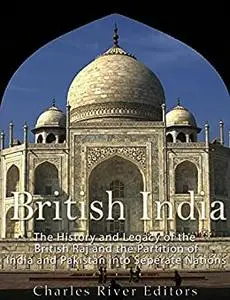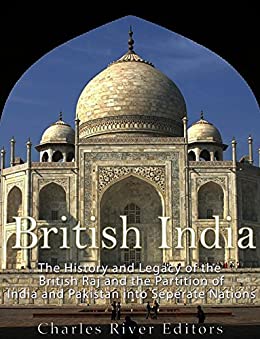British India: The History and Legacy of the British Raj and the Partition of India and Pakistan into Separate Nations by Charles River Editors
English | October 27, 2017 | ISBN: 1978487614 | 155 pages | EPUB | 2.53 Mb
English | October 27, 2017 | ISBN: 1978487614 | 155 pages | EPUB | 2.53 Mb
*Includes pictures
*Includes contemporary accounts of British India
*Includes online resources and a bibliography for further reading
*Includes a table of contents
The British East India Company served as one of the key players in the formation of the British Empire. From its origins as a trading company struggling to keep up with its superior Dutch, Portuguese, and Spanish competitors to its tenure as the ruling authority of the Indian subcontinent to its eventual hubristic downfall, the East India Company serves as a lens through which to explore the much larger economic and social forces that shaped the formation of a global British Empire. As a private company that became a non-state global power in its own right, the East India Company also serves as a cautionary tale all too relevant to the modern world’s current political and economic situation.
To the Indian people, the events of 1857 are known as the first War for Independence. For the British, the time is referred to as a mutiny, an uprising, or a rebellion. It is ironic that a similar story played out just under 100 years earlier, during the American Revolution, or as the Americans called it, the War for Independence. Whatever the moniker, in 1857, one of the Indian armies, the Bengal, mutinied. In the most cursory histories of the period, the cause of the rebellion is simply cited as an oversight, a change in the type of grease used in powder cartridges rumored to contain animal fat. This revelation horrified both Hindus and Muslims. The British response, which either failed to recognize the need to address the growing rumors or attempted to force Muslim and Hindu soldiers to use the ammunition despite their objections, made things worse.
Once it had put a stop to the rebellion by defeating the various Indian rebel groups individually, the British government ended up ruling India directly. However, as McLeod pointed out, “Like much of British imperial expansion, taking formal control of India was not intentional. Instead when British lives and trading interests (represented by the East India Company) were threatened by violent reaction to encroaching westernization, London felt obligated to step in to take control of both the situation and the country.” The news was delivered to the Indian people in a proclamation by the English government in 1858.
Ultimately, the East India Company’s activity across the Indian subcontinent led to further British involvement there, and the British Raj, a period of British dominance and rule over India that formally began in 1857 and lasted until 1947, remains a highly debated topic amongst historians, political scientists, the British people, and the people of modern India.
By the time the British began to contemplate a withdrawal from India, 565 princely states were officially recognized, in addition to thousands of zamindaris and jagirs, which were in effect feudal estates. The stature of each Princely State was defined by the number of guns fired in salute upon a ceremonial occasion honoring one or other of the princes. These ranged from nine-gun to twenty-one-gun salutes and, in a great many cases, no salute at all.
It stands to reason, therefore, as India began the countdown to independence after World War II, that the Indian Muslim leadership would begin to express anxiety over the prospect of universal suffrage and majority rule. At less than 20 percent of the population, Indian Muslims would inevitably find themselves overwhelmed by the Hindu majority, and as the British prepared to divest themselves of India, ancient enmities between Hindu and Muslim, long papered over by the secular and remote government of Britain, began once again to surface.
British India: The History and Legacy of the British Raj and the Partition of India and Pakistan into Separate Nations looks at the centuries of British involvement in the region and its aftermath.
Feel Free to contact me for book requests, informations or feedbacks.
Without You And Your Support We Can’t Continue
Thanks For Buying Premium From My Links For Support
Without You And Your Support We Can’t Continue
Thanks For Buying Premium From My Links For Support



